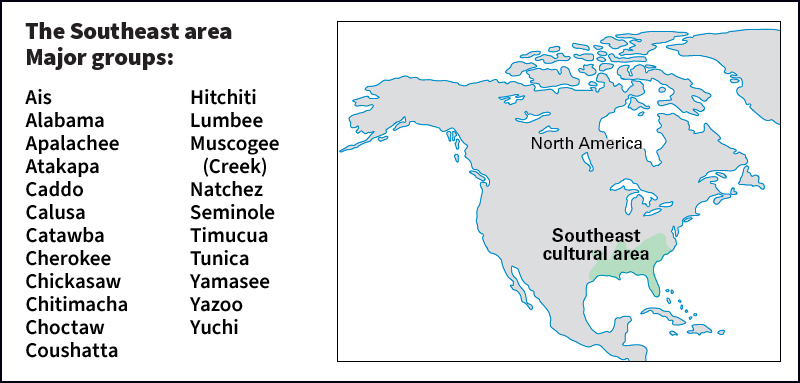Creek are an Indigenous (native) American people who once occupied the Georgia and Alabama area. English traders used the name Creek to refer to allied tribes of the Muscogee (also spelled Muskogee) people. The Muscogee speak a language belonging to the Muskogean language family, which includes Maskoke and Seminole.

Before Europeans arrived in North America, Muscogee people hunted, fished, and collected wild plants in addition to cultivating crops and raising turkeys. They built villages featuring central plazas and large dome-shaped ceremonial buildings situated atop earthen mounds. Most Muscogee villages were surrounded by a defensive palisade (fence of wooden stakes).
The Spanish Conquistador Hernando de Soto and his army became the first Europeans to contact the Muscogee in 1539. The encounter led to conflict, and de Soto burned Muscogee villages and enslaved hundreds of Indigenous Americans. By the time English settlers arrived in the 1600’s, the Muscogee and a number of related groups had allied to form what the English called the Creek Confederacy. Some Muscogee joined the nearby Hitchiti and moved into southern Florida. These people became known, along with another group that shared the area, as the Seminole. See Seminole.
In 1811, the Shawnee leader Tecumseh and his brother Tenskwatawa persuaded many leaders of the Muscogee confederacy to join their war against the United States. The confederacy’s warriors, known as Red Sticks because of their red-painted war clubs, were led by Chief Menawa. Troops under the command of future U.S. president Andrew Jackson defeated the Red Sticks at the Battle of Horseshoe Bend in Alabama on March 27, 1814. The United States then made the Muscogee and other Southeastern tribes surrender millions of acres of ancestral land. In the 1830’s, the United States forced most Muscogee to move to the Indian Territory in what is now Oklahoma. However, several Muscogee tribes remain in Alabama, Georgia, and Florida. According to the 2020 census, there are about 45,000 Muscogee.
